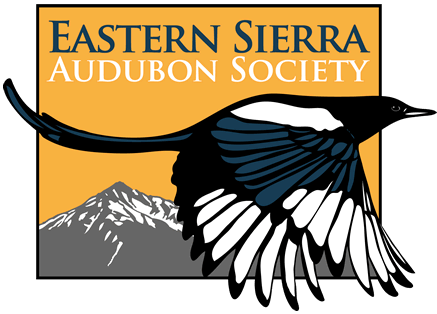During 1992 four species of birds were added to the list of birds documented for Inyo County. This brought the total to 397 which exceeds the lists of 29 states!
January ushered in not only the New Year but a new record of a Trumpeter Swan near Tecopa. Photographs and the number off the neckband were obtained by Jan Tarbel.
On March 15th a field excursion attended by members of the California Bird Records Committee documented and photographed the first Wrentit. A pair of birds, usually found in the chaparral, were in upper Sand Canyon at the extreme southwest corner of Inyo County.
On September 13th, Marge Irwin, of Napa, was camped at Lone Pine campground near Witney Portal. She put out a hummingbird feeder, as she always does, and in came a Broad-billed Hummingbird, normally found in Arizona and Mexico. She called other birders and photographs and written descriptions were taken.
On October 16th, Jon Dunn, senior editor of National Geographic Society’s “Field Guide to the Birds of North America”, found a Field Sparrow at Death Valley National Monument. Many observers, some from as far away as Louisiana, came to see and photograph this eastern sparrow.
How does a bird warrant being placed on a county (or state) list? Notice that all four of the above were seen by at least several observers, they were all photographed, and written documentation was provided. While many species of birds are easy to identify, many others are easy to misidentify, and therefore, there is a tremendous need to be very, very careful.
What should you do if you think you have found a rare bird?
- First: Write or tape a description of the bird while you are watching it and without looking at your bird book. Try to describe the color of each feather, the approximate size and shape of the bird, its behavior, any calls or songs it makes, etc. If you are an artist make a drawing noting the colors and patterns you’ve observed.
- Second: If possible, photograph the bird. Any photo is far better than none.
- Third: Consult a good field guide. Read about the bird you think it is. See if there are similar species with which it might be confused. Read which critical field marks you need to see to be sure you have a rare bird and not a similar but more common look-alike.
- Fourth: Call experienced birders immediately, so they may help to confirm your observations.
It is very rare for a bird to be added to any list if it is seen by a single observer. There are a few exceptions, of course, such as a well photographed and excellently documented bird by a highly experienced observer. If you would like a list of the birds of Inyo County with the rare birds noted, send a self-addressed, stamped envelope to Tom & Jo Heindel, Box 400, Big Pine, CA 93513.
Tags: hummingbird, sparrow, swan, wren
